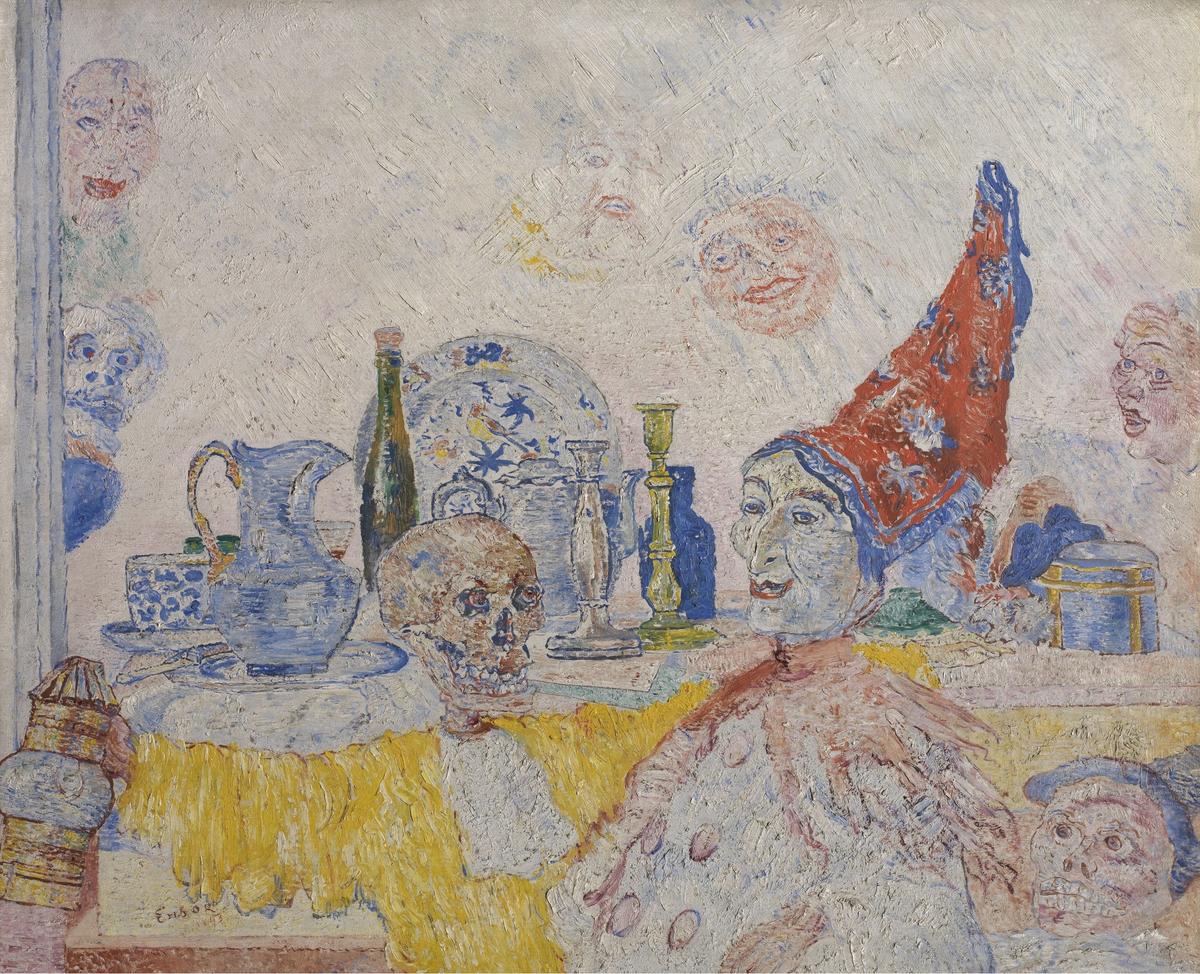The Belgian artist James Ensor may be easily recognisable for the macabre faces that so often feature in his works, but a major new season of exhibitions and events in his home country aims to reveal “the man behind the mask”.
Commemorating the 75th anniversary of Ensor’s death, the year-long season will explore the work of the artist whose paintings, drawings and etchings frequently defy categorisation, crossing a range of genres and styles—from Symbolism to Expressionism, Fauvism to Surrealism and caricature. The organisers hope to highlight the lesser-known areas of his work.
“For many people, skeletons plus masks equals Ensor, but there’s so much more to tell,” says Stefan Huygebaert, curator at the Mu.zee museum in Ostend and a co-organiser of the season’s launch exhibition Rose, Rose, Rose à mes yeux: James Ensor and Still Life in Belgium from 1830 to 1930 (16 December-14 April 2024). “This is a major point we want to make both with the Still Life exhibition and with the Ensor year as a whole.”
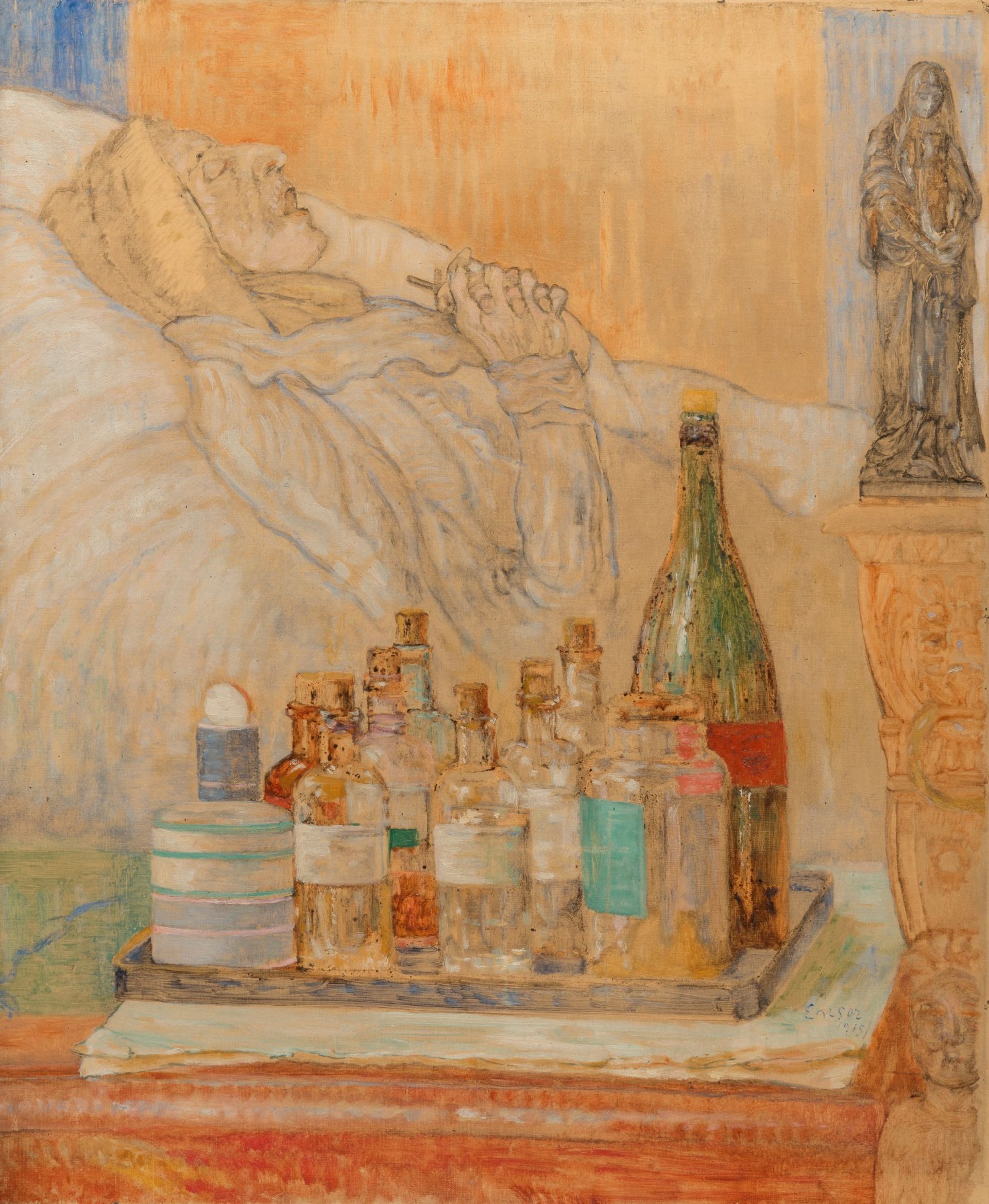
James Ensor's My dead mother (1915), featured in Rose, Rose, Rose à mes yeux: James Ensor and Still Life in Belgium from 1830 to 1930 at the Mu.zee museum
Photo: Steven Decroos
Ensor was born in Ostend in 1860 to an English father and a Belgian mother, who owned souvenir shops selling beach ephemera and the kind of carnival masks that were to figure frequently in his work. As a teenager he studied at the Royal Academy of Fine Arts in Brussels, before in 1883 co-founding the artists’ group Les Vingt alongside other Belgian painters, sculptors and designers including Fernand Khnopff, Théo van Rysselberghe and Theo Hannon. Later, he returned to Ostend where he would spend most of his life, painting and becoming active in the town’s social and cultural life.
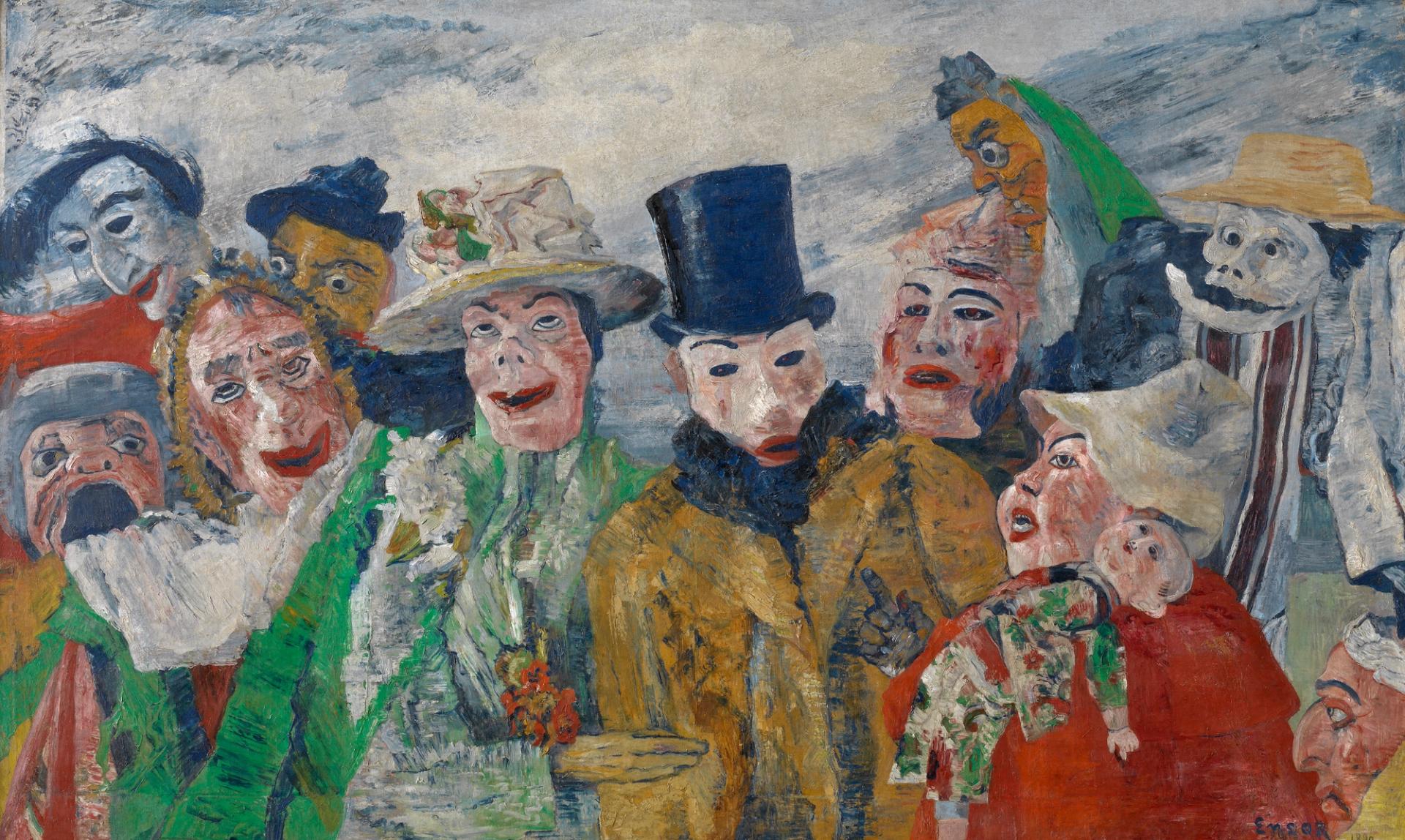
Ensor's The Intrigue (1890)
Photo: Hugo Maertens, public domain
The extensive series of events celebrating the artist, supported by the Flemish government, will include a total of 11 major exhibitions taking place across Ostend, Antwerp and Brussels, as well as numerous other related events ranging from concerts and literary events to children’s theatre performances. Restaurants in Ostend will also be introducing Ensor-themed menus for the occasion.
The Still Life show is a bold and ambitious starting point, featuring 73 works by Ensor alongside a number of works by fellow Belgian artists including René Magritte and Frans Mortelmans, as well as lesser-known names. Many of the works are brought together for the first time, and include loans from local and international institutions, as well as private collections.
The Ensor works on show are arranged thematically. They range from dark-palleted works from his very early years, such as The Hat Stand (1876), painted when he was just 16, and Peonies and Poppies (1895)—with its thick sludges of vivid red and pink paint laid on with a palette knife—to the more precise, controlled works of the 1930s. These later works feature the luminescent, mother-of-pearl backgrounds, chinoiserie, shells and masks for which he is best known.

James Ensor, Shells (1936), featured in Rose, Rose, Rose à mes yeux: James Ensor and Still Life in Belgium from 1830 to 1930 at the Mu.zee museum
Photo: Gérald Micheels
Also on show will be Magritte's The Red Model (1953), in which an old pair of lace-up boots have metamorphosed into human feet, bringing what Huygebaert describes as “life into still life” in the same way that Ensor did with his scenes featuring masks and human characters alongside inanimate objects.
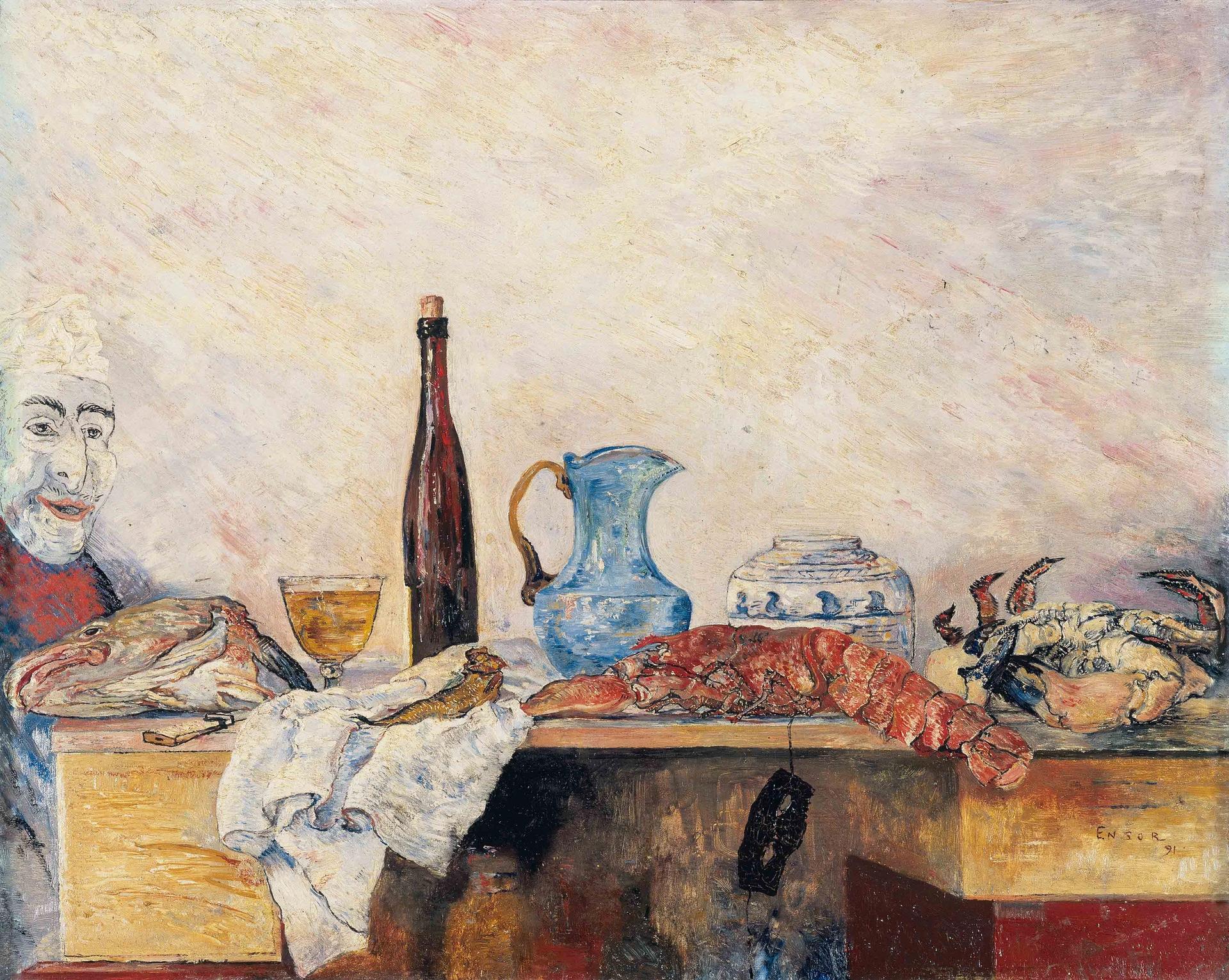
Ensor's Mask and Scarf (1891)
© Koninklijke Musea voor Schone Kunsten van België
Elsewhere, a series of exhibitions will open at the James Ensor House, also in Ostend, including James Ensor: Self-Portraits (21 March-16 June)—which will include Ensor’s famous Self-portrait with Flowered Hat (1883), in which he stares directly out at the viewer while sporting a jaunty floral headpiece. James Ensor: Satire, Parody, Pastiche (19 September-12 January 2025), meanwhile, will showcase elements of humour and caricature in Ensor’s work, including through his commentaries on the hypocrisy of bourgeois social mores and art criticism.
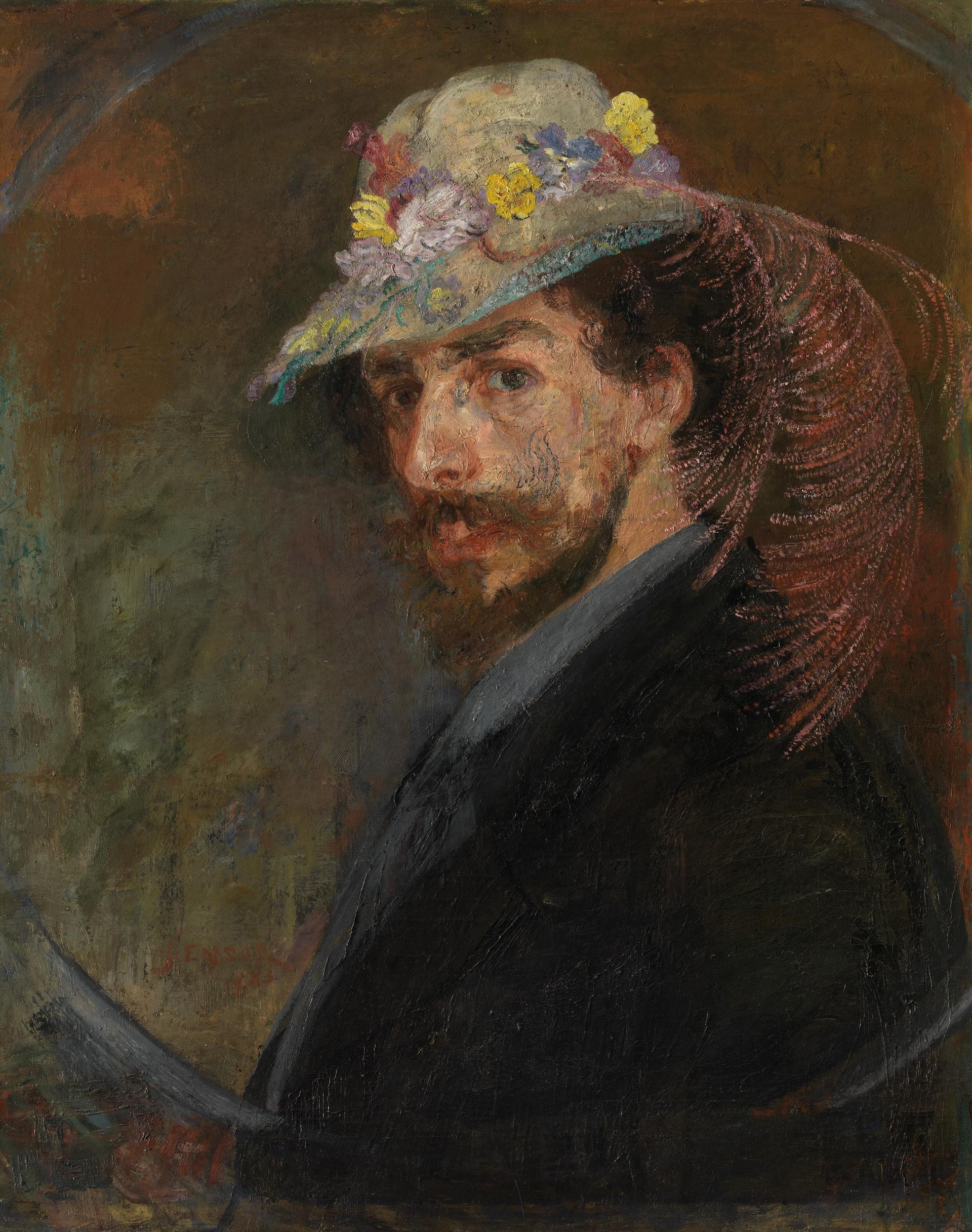
Ensor's Self-portrait with Flowered Hat (1883), featured in James Ensor: Self-Portraits at the James Ensor House in Ostend
© Collectie Mu.ZEEv. Photo: Hugo Maertens
On 28 September 2024, the Ensor season’s largest show, In Your Wildest Dreams, will open at KMSKA (Royal Museum of Fine Arts Antwerp), running until 18 January 2025. This will be Belgium’s most expansive Ensor exhibition since the retrospective KMSKA held in 1999. It will display his work alongside that of artists who inspired him, including Hieronymus Bosch, Francisco Goya, Claude Monet and Edvard Munch.
Other significant shows in Antwerp will include Ensor’s Quest for the Light: Experiments on Paper at the Museum Plantin-Moretus (28 September 2024-5 January 2025), focusing on his drawing practice.
At Antwerp's Fomu photography museum, meanwhile, Cindy Sherman: Anti-Fashion (28 September-2 February 2025) will highlight the way the American contemporary artist has taken the themes of masking and self-representation—so central to Ensor's practice—into a 21st-century context. Works will include Sherman's Untitled #410 (2003), where we see her with a white clown face and red nose while sporting a Stetson hat.
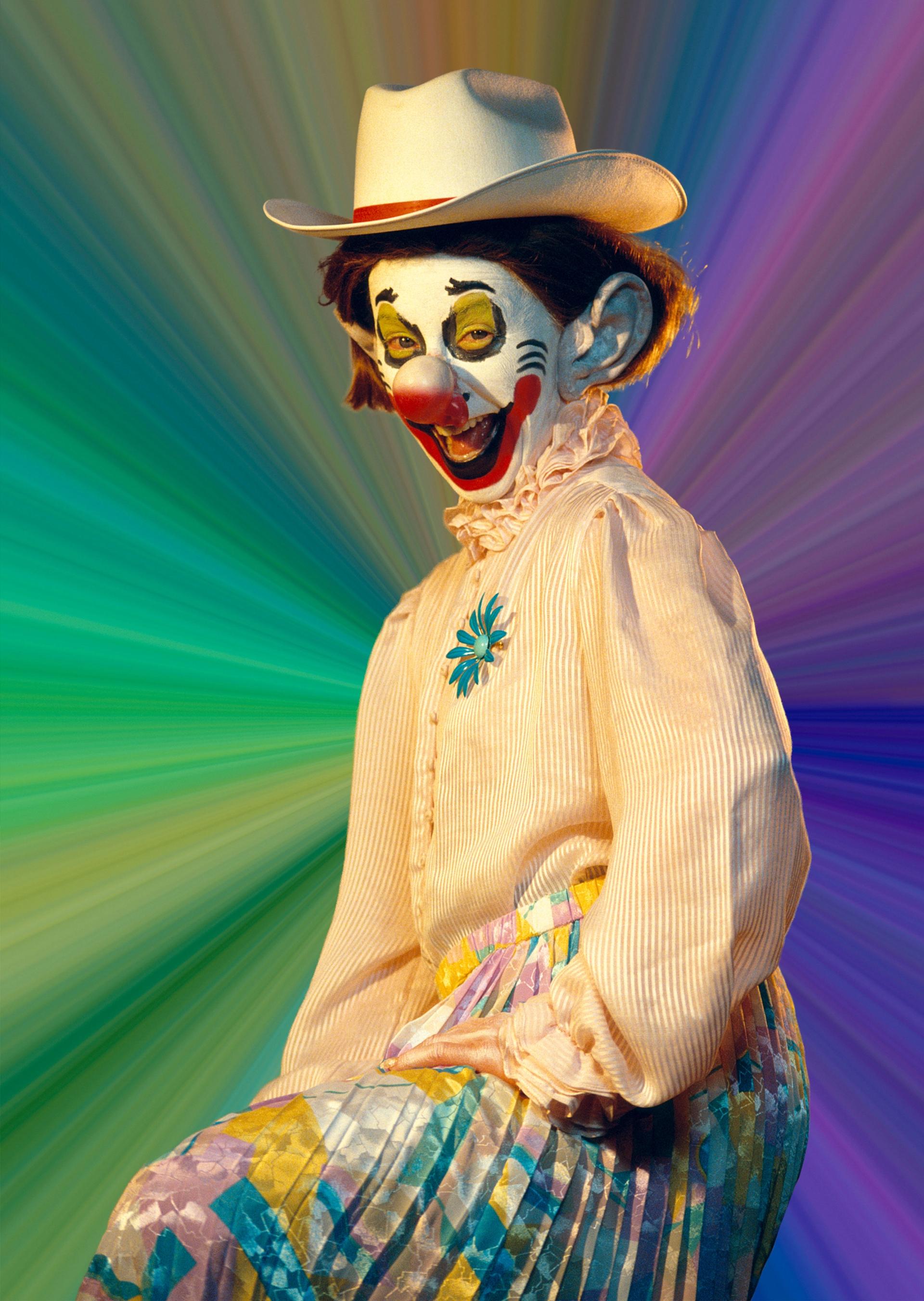
Cindy Sherman, Untitled #410 (2003), which will feature in Cindy Sherman: Anti-Fashion (28 September-2 February 2025) at Fomu photography museum, Antwerp
© Cindy Sherman
Ensor is already a huge star in his native Belgium—a fact perhaps emphasised by King Philippe and Queen Mathilde of Belgium's plans to visit the Still Life show this week. Within the art world, his reputation is so pervasive that the term “Ensorian” is commonly used as an artistic reference. The curators behind this year’s programme hope the anniversary will introduce him to a broader international audience and consolidate his position in European art history.
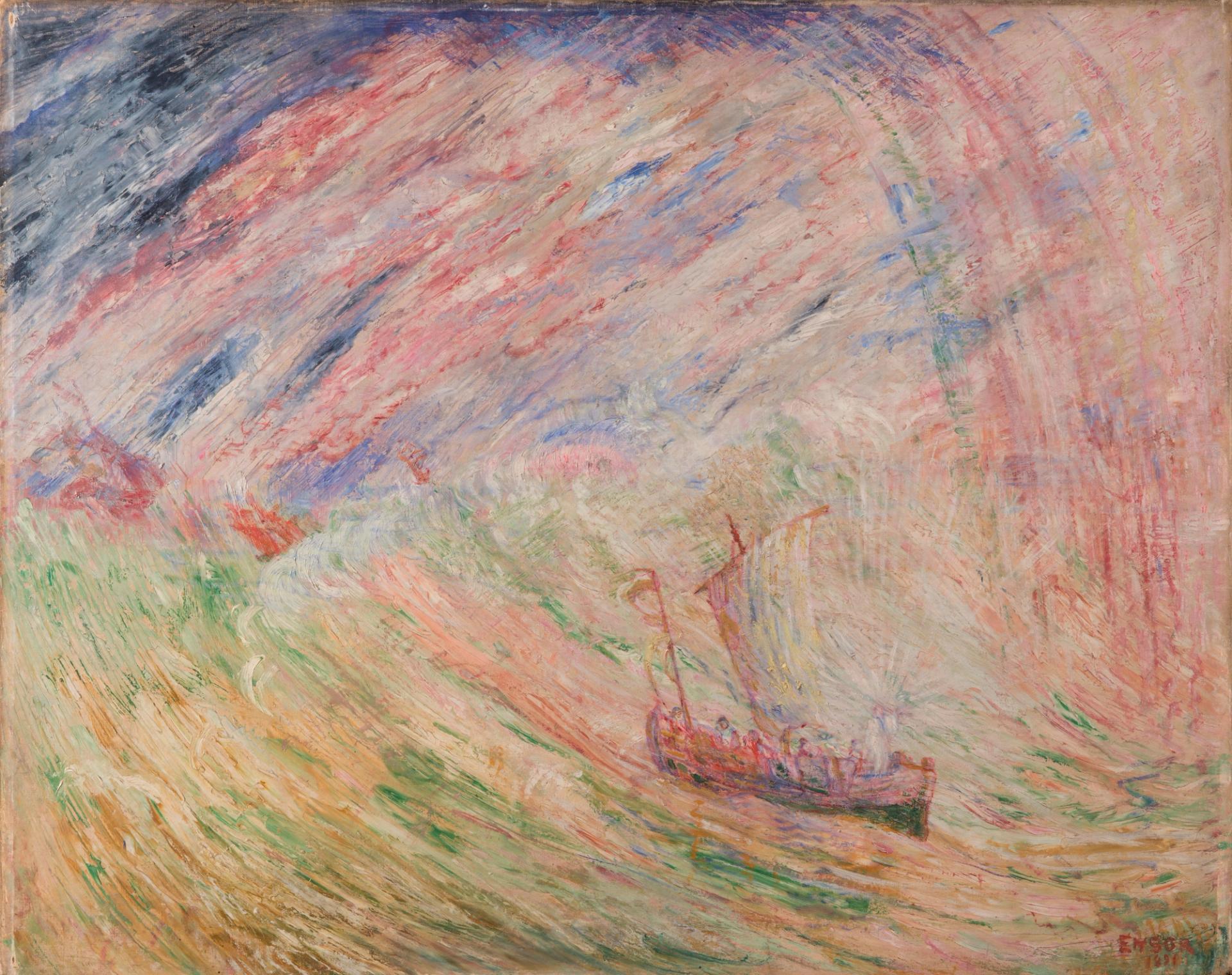
Ensor's Christ Calming the Storm (1891)
© Collectie Mu.ZEE
“Ensor is difficult to pigeonhole and that makes him intriguing,” Huygebaert says. “His work has Impressionist features, pre-Impressionist features, and in terms of language with words, there’s a pre-Dadaist element as well. Some might even say his use of colour is close to Fauvism, and if you think about it, artists who are difficult to pigeonhole are often the ones we remember and find most intriguing.”
More details on the full Ensor2024 programme can be found here.


